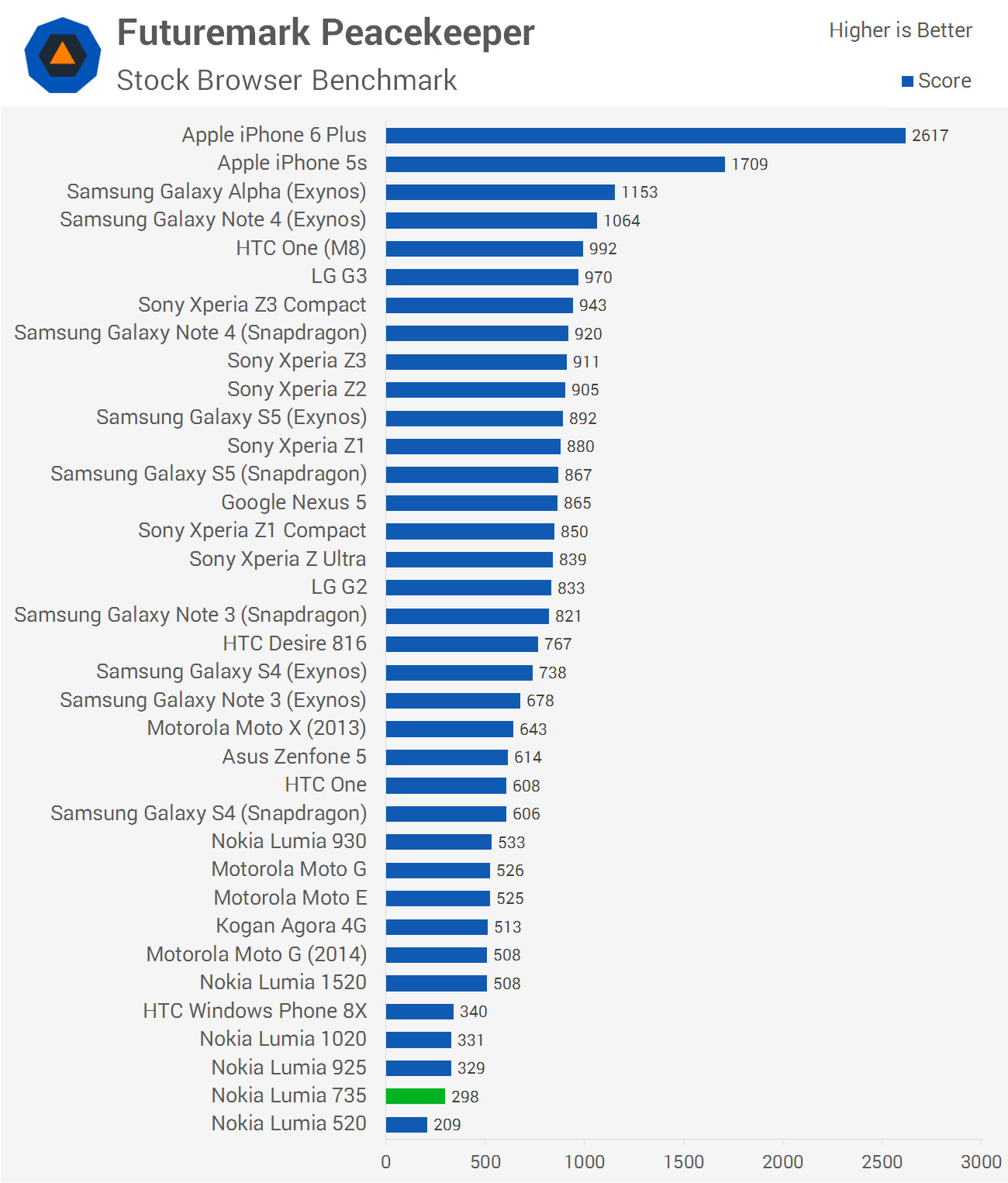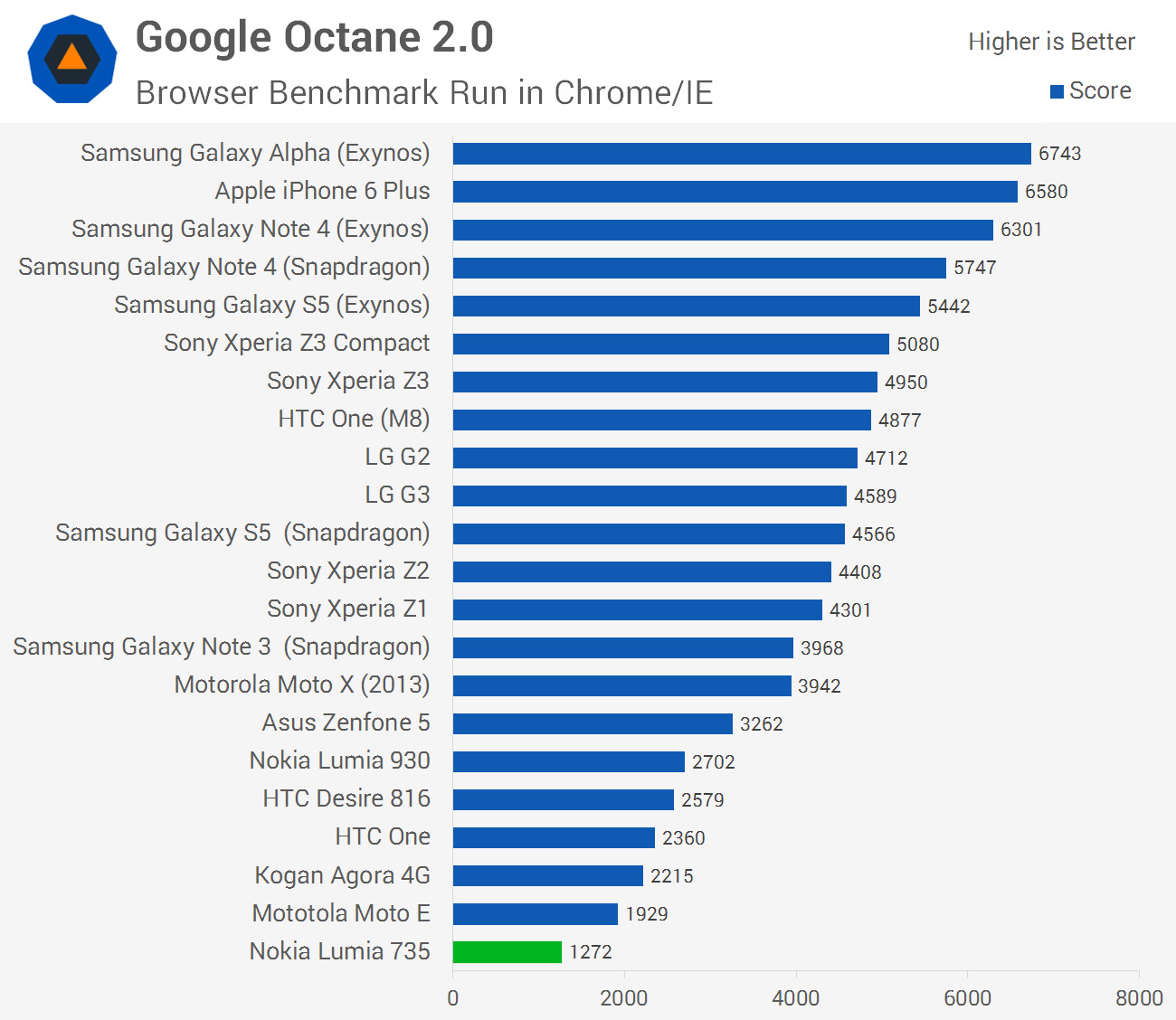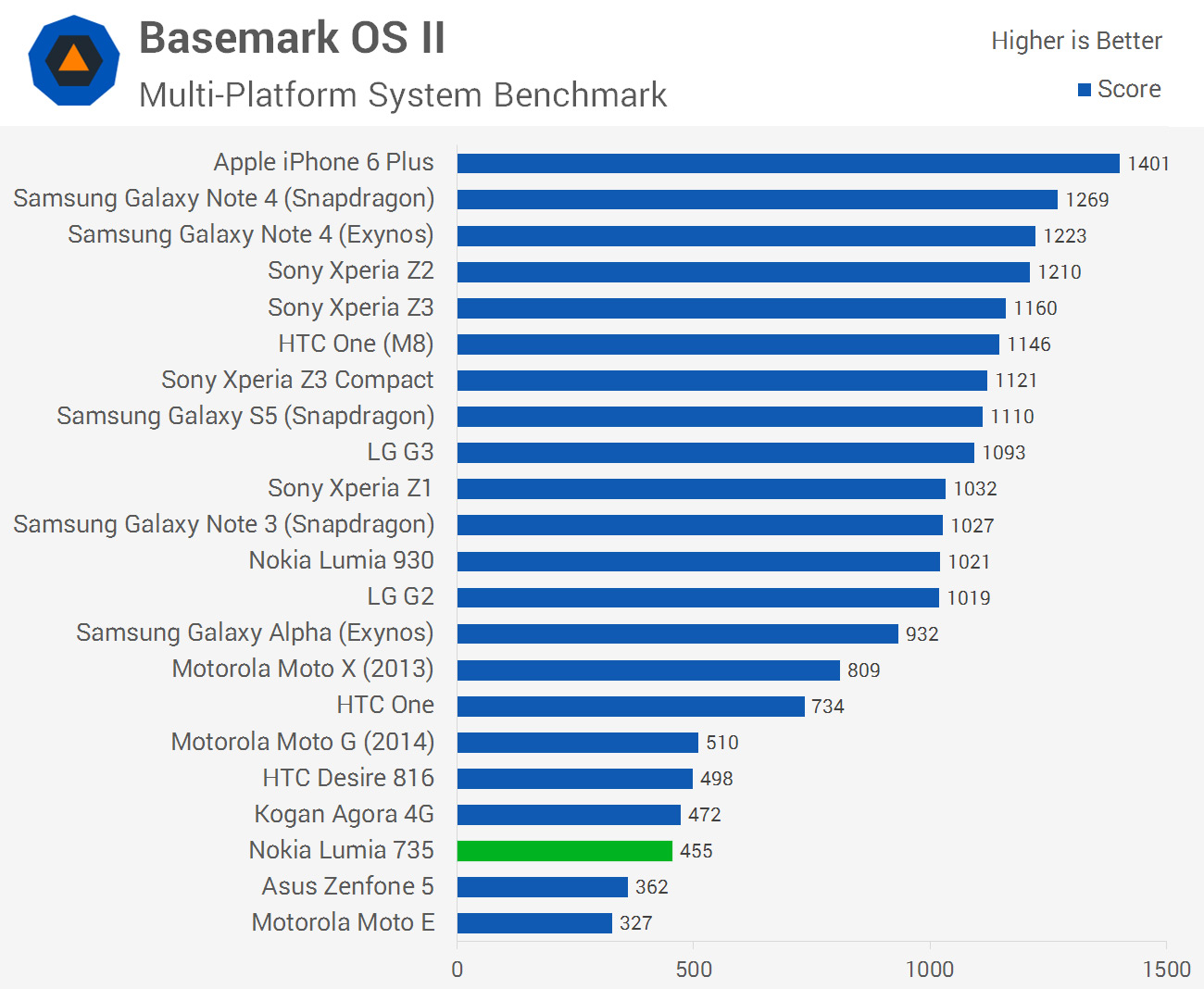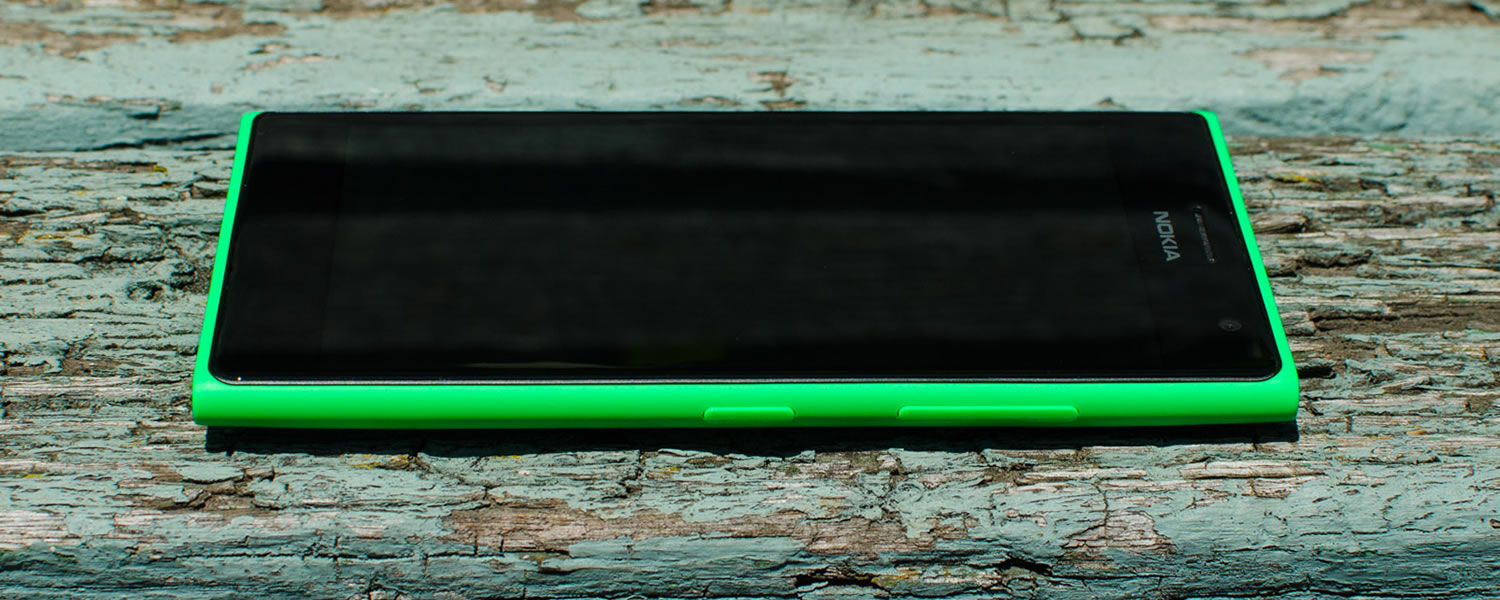Snapdragon 400 Performance
The Nokia Lumia 735 is a mid-range device, so you're probably expecting it to come with a mid-range SoC... and you'd be right. Once again we're faced with Qualcomm's Snapdragon 400, which is certainly a popular piece of silicon at this price point. It's also completely uninteresting, as I've covered it many times before in a range of handsets.
The particular SoC used in the Lumia 735 is the MSM8926, a 1.2 GHz quad-core variant using ARM Cortex-A7 CPU cores and the Adreno 305 GPU clocked at 450 MHz. The very same SoC is used in the LTE variant of the Motorola Moto G, the HTC One Mini 2 and Nokia's very own Lumia 830. The 3G-only version of this chip is used in the new Moto G that I reviewed recently as well, so it's a popular family of chips.
The MSM8926 comes with Category 4 LTE support, which is a welcome feature that you don't always get with mid-range smartphones. Unfortunately, as this device is designed for Europe and parts of Asia Pacific, the Lumia 735 only supports FDD-LTE Bands 3, 7 and 20 and HSPA+ on the 850, 900 and 2100 MHz bands, making it unsuitable for use on some of the United States' main carriers.
Now is a good time to mention the brother of the Lumia 735: the Lumia 730. Most of the 730's specifications are identical to the 735, except that the 730 is a HSPA+ only device (using the MSM8226 Snapdragon 400 variant) that supports the 850, 900, 1900 and 2100 MHz bands. The Lumia 730 is also a dual-SIM device, while the Lumia 735 supports only one SIM.
Aside from these differences, both the Lumia 735 and Lumia 730 come with 1 GB of RAM, 8 GB of internal storage with microSD expansion, Wi-Fi 802.11b/g/n, Bluetooth 4.0 and NFC.





There's nothing particularly unusual about the benchmarks I ran on the Lumia 735, with the handset performing in a similar range to other Windows Phones and Snapdragon 400 devices. Internet Explorer 11 continues to be a performance bottleneck compared to Chrome or Safari, although in general usage it appears to be only slightly slower than these browsers.
One thing that's becoming more and more noticeable these days is that Windows Phone no longer has a clear speed and smoothness advantage over similarly priced Android phones with similar hardware. In fact in some respects Windows Phone is at a disadvantage, particularly with app loading. Opening apps and multitasking simply feels sluggish and slow on the Lumia 735 compared to a handset like the Moto G, hindered by a ton of useless splash screens and lengthy animations.
Aside from this, though, the actual in-app performance seems decent on the Lumia 735, and I had no trouble playing a selection of games from the Windows Phone store. The OS seems fairly well optimized for standard smartphone tasks on mid-range hardware, although I'd like to see Microsoft put some work into speeding up app loading.
As the Lumia 735's internal storage is limited at just 8 GB, with 5.78 GB available to use out of the box, I'd highly recommend getting a cheap microSD card to store photos, music and even some apps. 6 GB can fill up very quickly, especially if you're downloading sizable games from the app store as well as storing media content.
